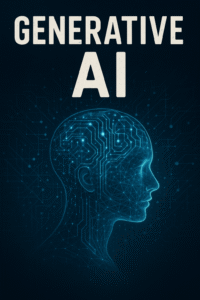1. Empathize:
- Objective: Understand the needs and challenges of learners when acquiring Python programming skills.
- Methods:
- Conduct surveys and interviews with potential users, including beginners, average learners, and experts.
- Analyze existing forums and discussions to identify common pain points and preferences in Python learning.
2. Define:
- Objective: Clearly define the problems and opportunities based on user feedback.
- Methods:
- Organize user feedback into key themes, identifying specific areas of improvement.
- Prioritize challenges and opportunities to inform the design and development process.
3. Ideate:
- Objective: Generate creative solutions to address the defined challenges and opportunities.
- Methods:
- Conduct brainstorming sessions with a multidisciplinary team to generate innovative ideas.
- Encourage team members to think outside traditional educational approaches and propose novel solutions.
4. Prototype:
- Objective: Develop early-stage prototypes for the Contextual AI-based Web Application.
- Methods:
- Create wireframes and low-fidelity prototypes to visualize the user interface and flow.
- Implement a basic version of the Contextual AI algorithms to demonstrate adaptability and personalization.
5. Test:
- Objective: Gather feedback on the prototype to refine and improve its functionality.
- Methods:
- Conduct usability testing with learners at different levels (beginner, average, expert).
- Collect feedback on the user interface, learning pathways, and contextual AI features.
- Iterate on the prototype based on user insights.
6. Develop:
- Objective: Implement the full-fledged Contextual AI-based Web Application.
- Methods:
- Use agile development methodologies to incrementally build and enhance features.
- Integrate user feedback received during the testing phase into the development process.
7. Deploy:
- Objective: Make the web application accessible to a broader audience for real-world usage.
- Methods:
- Deploy the application on a server, ensuring scalability and reliability.
- Monitor user interactions and address any issues that arise in real-world usage.
8. Evaluate:
- Objective: Assess the effectiveness of the developed Contextual AI-based Web Application.
- Methods:
- Collect quantitative data on user engagement, retention, and learning outcomes.
- Conduct qualitative assessments through surveys and interviews to gather user perspectives on the application’s impact.
9. Refine:
- Objective: Incorporate user feedback and iterate on the application for continuous improvement.
- Methods:
- Regularly review user feedback and analytics to identify areas for refinement.
- Release updates that address user needs and enhance the application’s features.
10. Scale:
- Objective: Expand the reach and impact of the Contextual AI-based Web Application.
- Methods:
- Develop strategies for marketing and increasing user adoption.
- Explore partnerships with educational institutions and organizations to integrate the application into formal learning programs.
11. Document:
- Objective: Document the design thinking process, development decisions, and user feedback.
- Methods:
- Create comprehensive documentation detailing the design choices, development processes, and key learnings.
- Share documentation with the community to contribute to the collective knowledge on contextual AI in programming education.
12. Ethical Considerations:
- Objective: Address ethical considerations related to data privacy, accessibility, and fairness.
- Methods:
- Ensure compliance with ethical guidelines and regulations.
- Conduct ethical reviews of the application’s features and algorithms.
13. Community Engagement:
- Objective: Foster community engagement and collaboration around the developed application.
- Methods:
- Encourage user communities to share experiences, insights, and best practices.
- Create forums or discussion boards for learners to connect and support each other.
14. Continuous Learning:
- Objective: Stay updated with advancements in contextual AI, programming languages, and educational technology.
- Methods:
- Attend conferences, workshops, and webinars related to AI in education.
- Participate in the broader community to exchange knowledge and insights.
15. Conclusion:
- Objective: Reflect on the overall design thinking approach and its impact on the development of the Contextual AI-based Web Application.
- Methods:
- Summarize key learnings, successes, and areas for improvement in the application and the design thinking process.
- Identify future research directions and opportunities for innovation in programming language education.
By applying a design thinking approach, this research methodology aims to create a user-centered, adaptable, and impactful Contextual AI-based Web Application for Learning Python. The iterative nature of design thinking allows for continuous improvement and innovation throughout the development lifecycle.




